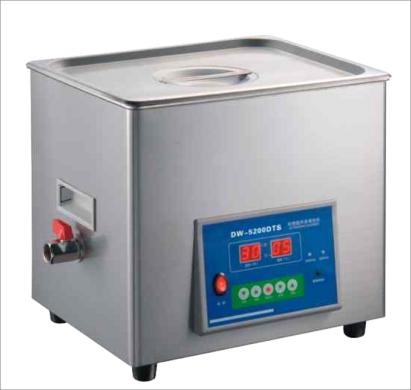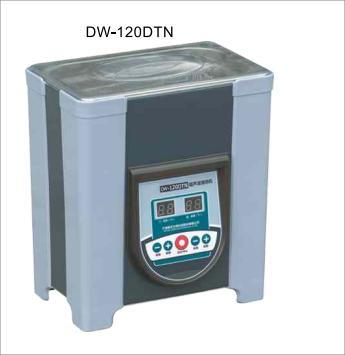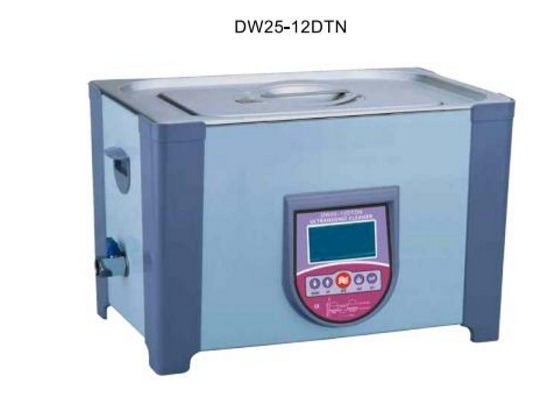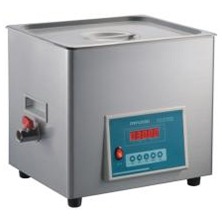The use of high-frequency sound waves to induce cavitation bubbles in a liquid is what ultrasonic cleaning is all about. Ultrasonic cleaners generate tiny bubbles that gently brush away dirt, grime, and pollutants from various items by using ultrasonic waves. To achieve the best results, the liquid used in the ultrasonic cleaner is critical in facilitating the cleaning process and protecting delicate goods. Choosing the right cleaning solution is a critical stage that determines the cleaning process’s success. In this article, we discuss the topic of what liquid to use in ultrasonic cleaners, exploring the key considerations and options when choosing the right liquid for ultrasonic cleaners and diverse types of cleaning liquids.

What are Key Considerations When Selecting a Liquid for Ultrasonic Cleaner?
Choosing the right ultrasonic cleaner liquid is a key decision that affects the quality of your cleaning results as well as the safety of your objects.
1. Compatibility with Materials
The cleaning liquid’s compatibility with both the things being cleaned and the ultrasonic cleaner’s tank material is critical. Some cleaning solutions might cause discoloration, corrosion, or damage when they come into contact with specific materials. Make sure the cleaning liquid is appropriate for the things you’re cleaning, whether they’re metals, plastics, ceramics, glass, or fragile objects like jewelry and electronics.
2. Cleaning Objectives
Determine the specific cleaning objectives you want to achieve. Cleaning solutions vary according on the application. For example, if you’re cleaning medical devices, you’ll need a solution that effectively removes biological impurities. When cleaning car parts, you’ll need a solution that can handle grease and oil.
3. Type of Contaminants
The type of contaminants you’re dealing with plays a significant role in determining the appropriate cleaning liquid. Grease, oils, dirt, rust, biological matter, and other contaminants may require different types of cleaning liquids. Choose a solution that is specifically formulated to address the particular contaminants you’re trying to remove.
4. Material Sensitivity
Take into account the sensitivity of the materials you’re cleaning. To avoid harm, delicate or sensitive items may require a gentle cleaning solution. Use gentle chemicals that will not corrode or discolor sensitive surfaces.
5. Environmental Impact
Be mindful of the environmental impact of the cleaning solution. Some cleaning agents may contain harsh chemicals that could harm the environment or require special disposal methods. Whenever possible, opt for environmentally friendly and biodegradable cleaning solutions.
6. Residue and Residue Removal
Examine whether the cleaning solution leaves residues that may necessitate additional cleaning measures. Residues left on delicate things such as jewelry or electronics might be hazardous. Choose a solution that reduces the possibility of undesired leftovers.
7. Manufacturer Recommendations
Always follow the manufacturer’s instructions for both your ultrasonic cleaner and the cleaning liquids. Manufacturers frequently issue instructions to assure compatibility, efficiency, and safe use of ultrasonic cleaners.
8. Testing
Perform a small-scale test on a less noticeable or less valuable item before using any cleaning solution extensively to check that the solution has no negative effects. This enables you to test compatibility and efficacy without endangering vital products.
9. Regulatory Compliance
Be aware of any restrictions or recommendations in your area regarding the use and disposal of cleaning products. Adhering to regulatory requirements is essential for both safety and environmental protection.

What are Common Types of Cleaning liquids used in Ultrasonic Cleaners?
The cleaning liquid you use with your ultrasonic cleaner has a significant impact on its effectiveness in eliminating pollutants and keeping the integrity of the items being cleaned.
1. Water-Based Cleaning Solutions
Water is a universal solvent that serves as the foundation for many cleaning solutions. It is suitable for cleaning general dirt and debris from surfaces when used alone. Water-based solutions, on the other hand, are frequently mixed with detergents, soaps, or specialist cleaning agents to improve cleaning power. Water-based cleaning solutions are suitable for a wide range of materials and are best suited for cleaning objects that are not excessively filthy or polluted.
2. Solvent-Based Cleaning Solutions
Solvents are good at removing oil, grease, and other non-water-soluble pollutants. Solvent-based cleaning solutions are widely utilized in industrial settings where heavy gear and equipment must be thoroughly degreased. These solutions are particularly effective for cleaning parts that are heavily coated in oil, lubricants, or similar substances.
3. Alkaline Cleaning Solutions
Alkaline cleaning solutions are designed to remove difficult impurities such as oils, greases, and carbon deposits. They function by dissolving and emulsifying these chemicals, making them easier to eliminate. Alkaline solutions are widely employed in automotive, manufacturing, and industrial environments where a high level of cleaning power is required.
4. Acidic Cleaning Solutions
Mineral deposits, scale, rust, and other inorganic pollutants are dissolved by acidic cleaning solutions. They are frequently utilized in applications where surfaces have rusted or become badly discolored. However, when employing acidic solutions, care must be taken because they can be caustic and may require special disposal.
5. Enzymatic Cleaning Solutions
Enzymatic solutions are extensively utilized in hospitals and laboratories. They are capable of degrading biological pollutants such as proteins, blood, and organic waste. Enzymatic solutions are mild on sensitive equipment.
6. Specialized Cleaning Solutions
Certain industries require specialist cleaning solutions that are suited to their specific requirements.
Electronics: Because it evaporates fast and leaves little behind, isopropyl alcohol is often used to clean electronics.
Jewelry: Jewelry cleaning solutions are intended to remove tarnish, dirt, and grime from precious metals and gemstones in a safe and effective manner.
Medical Instruments: Biological pollutants are removed from surgical tools and medical equipment using medical-grade cleaning solutions.
7. Ultrasonic Cleaning Detergents
Ultrasonic cleaning detergents are designed specifically for use in ultrasonic cleaners. They are intended to improve the cavitation effect, allowing ultrasonic waves to more easily remove impurities from surfaces. Ultrasonic detergents are available in a variety of formulas to treat various pollutants and materials.

Conclusion
Choosing the right cleaning liquids for your ultrasonic cleaner is an important step in attaining the best results. Understanding the properties of various cleaning liquids allows you to use ultrasonic cleaning to achieve precision, efficiency, and exquisite cleanliness in a variety of applications.

